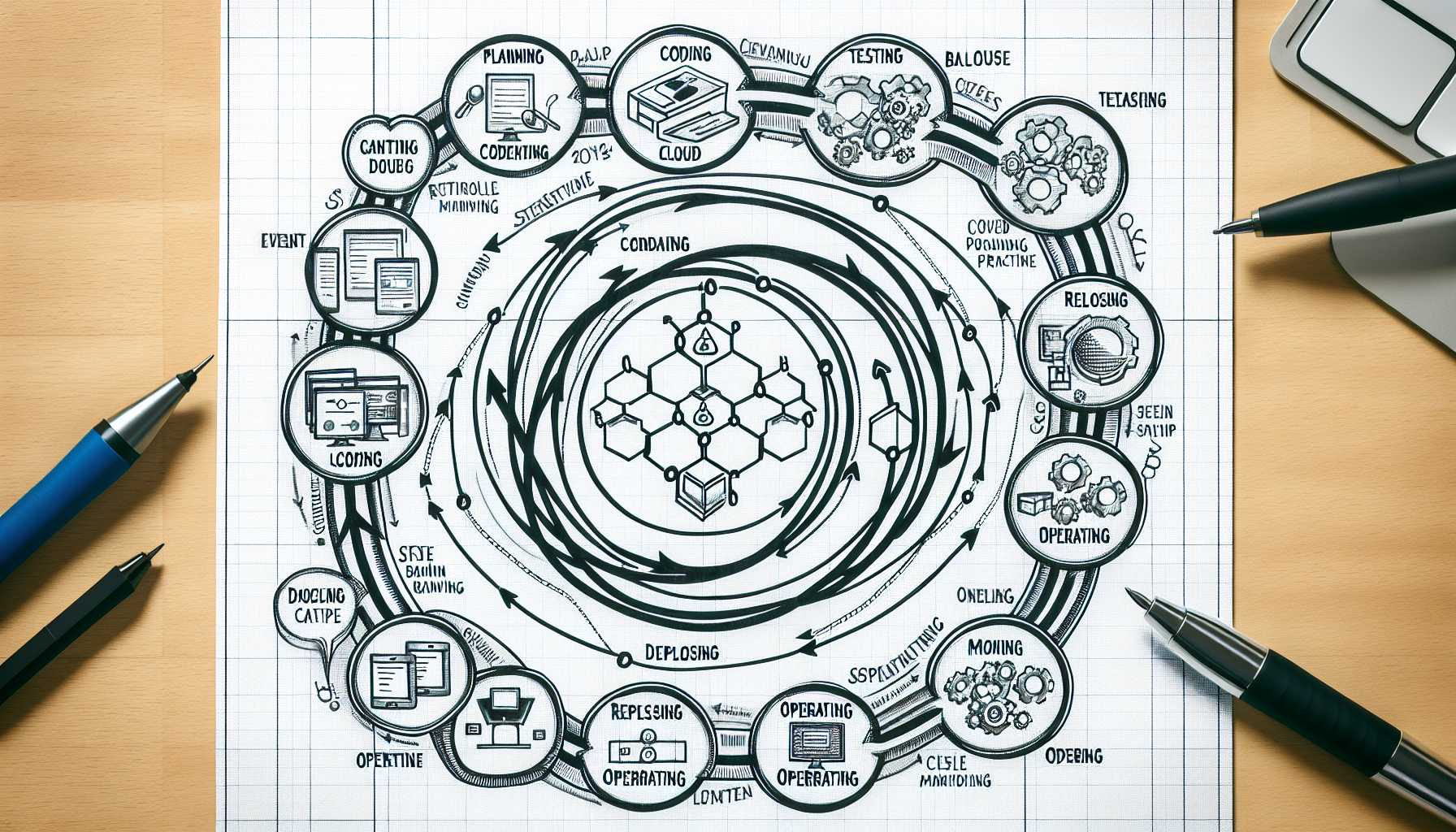Welcome once again, tech aficionados and seasoned product managers. As we navigate the relentless tides of software development, the methodological vessels we choose to sail—Agile and DevOps—often define our journey’s success. In this post, I’ll explore how these two methodologies not only coexist but complement each other, creating a formidable alliance in the software development process. I’ll draw from my own experiences and anecdotes to illustrate these synergies.

Understanding the Synergy
Agile and DevOps, while distinct, share a common goal: delivering high-quality software that meets user needs as quickly and efficiently as possible. The marriage of Agile—with its iterative, user-centered approach—and DevOps, with its emphasis on collaboration, automation, and continuous delivery, has the potential to transform product development lifecycles profoundly.
Agile: The Iterative Dynamo
My journey with Agile began over a decade ago when waterfall models were still prevalent. The switch to Agile was revelatory. It introduced flexibility, customer feedback loops, and shorter release cycles that allowed my teams to adapt to changes rapidly. However, the full promise of Agile wasn’t realized until it was paired with DevOps principles.
Principles of Agile
The Agile Manifesto emphasizes:
- Individuals and interactions over processes and tools
- Working software over comprehensive documentation
- Customer collaboration over contract negotiation
- Responding to change over following a plan
The iterative nature of Agile, with its Sprints and Scrums, allowed us to break down complex projects into manageable increments, constantly iterating, testing, and improving.
DevOps: The Collaborative Engine
As our methodology matured, the implementation of DevOps became a game-changer. DevOps is not just a set of tools or practices—it’s a cultural shift that emphasizes collaboration, communication, and the breaking down of silos between developers and operations teams.
Principles of DevOps
Continuous integration (CI), continuous delivery (CD), and continuous deployment became the backbone of our operability, and automation took center stage in ensuring that code could be reliably tested, integrated, and deployed with minimum human intervention.
When Agile Met DevOps
One of my most illustrative experiences was during a major product overhaul for a SaaS platform. The Agile sprints were churning out features, but deployment was a bottleneck. The introduction of DevOps practices like automated build pipelines and Kubernetes for container orchestration synchronized development and operations in a never-before-seen harmony.
The Meeting Points
Rapid feedback cycles: Agile’s feedback loops complemented by DevOps’ monitoring and quick deployment meant that customer feedback was quickly acted upon, and new versions were pushed out with dizzying velocity.
Quality assurance: DevOps brought a heightened focus on automated testing, which, integrated into the Agile method, ensured that each iteration met quality standards before being moved along the pipeline.
Cultural overhaul: Both methodologies share an aversion to rigid hierarchies and silos. Developers, operations, and even quality assurance teams began to work in concert, leading to a more holistic and efficient development cycle.
The Symbiotic Success
Agile provided the iterative thinking and user-centricity, while DevOps provided the means to make those iterations a reality through automation and efficient processes. Combined, they allowed my teams to produce results that were higher in quality, better aligned with user needs, and were delivered with such efficiency that our competitors struggled to keep pace.
Reflections on a Unified Approach
Agile and DevOps are more than methodologies—they are philosophies that inform every decision and interaction within the product development process. By harmonizing these approaches, I witnessed a transformation not just in how we developed software, but in how we thought about product creation as a holistic, continuous journey where development, feedback, and operations are inseparable facets.
I hope this post encourages you to explore the union of Agile and DevOps further and that you can find as much value in their synergy as I have over the years. Until next time, may your product management ventures be agile and your deployment pipelines robust.
